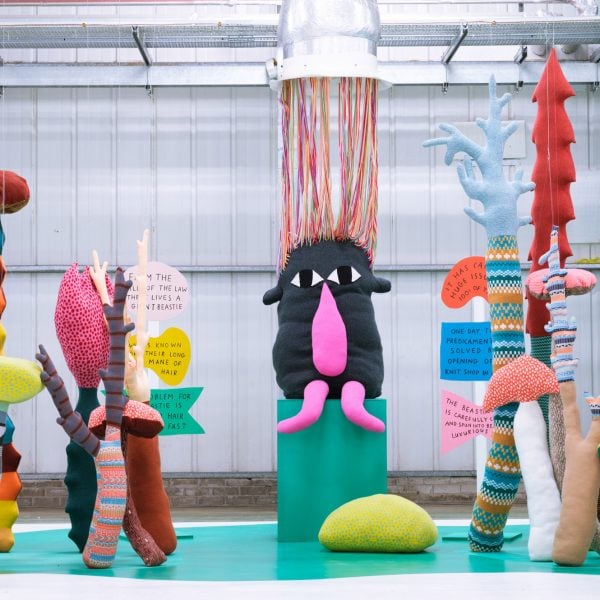Aeroplane seat covers designed for neurodivergent passengers and a knitted landscape filled with giant mushrooms were among the designs showcased at this year’s Dundee Design Festival, Scotland’s largest design event.
The festival, which took place from 23 to 29 September, celebrated the 10th anniversary of Dundee’s UNESCO City of Design status with installations and designs from over 180 local and international designers.
For its fifth edition, Dundee Design Festival overhauled a former factory space at the Michelin Scotland Innovation Parc to showcase more than 70 objects, ranging from lighting and furniture to textiles and industrial design.
The festival set out with an ambitious sustainability strategy and used less than 15 per cent of new materials to construct the event space, exceeding its target goal of a maximum of 30 per cent.
This was achieved by reusing exhibition materials from the V&A Dundee and using mistint paint stock donated from paint companies Craig & Rose and Crown Decorators.
Here, we have gathered eight highlights from the festival:
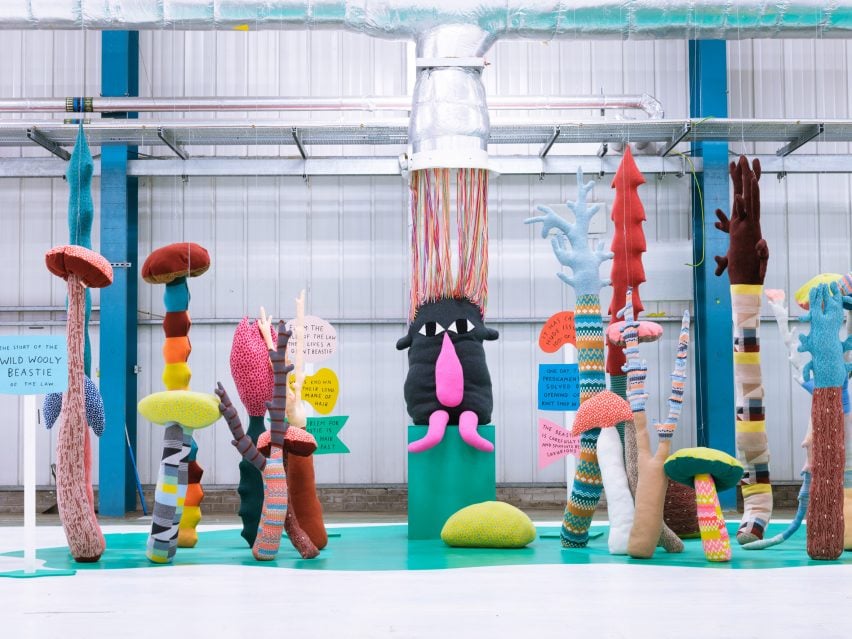
The Wild Wooly Beastie of the Law by Donna Wilson
Donna Wilson, who hails from Aberdeenshire and is currently based in London, created a “wooly wonderland” filled with knitted trees, giant mushrooms, flowers and an odd-looking creature with hair that appeared to be sucked into air ducts.
Further down the ducting, the creature’s wool hair dropped down into a knit shop, where visitors could knit it into a “never-ending” scarf.
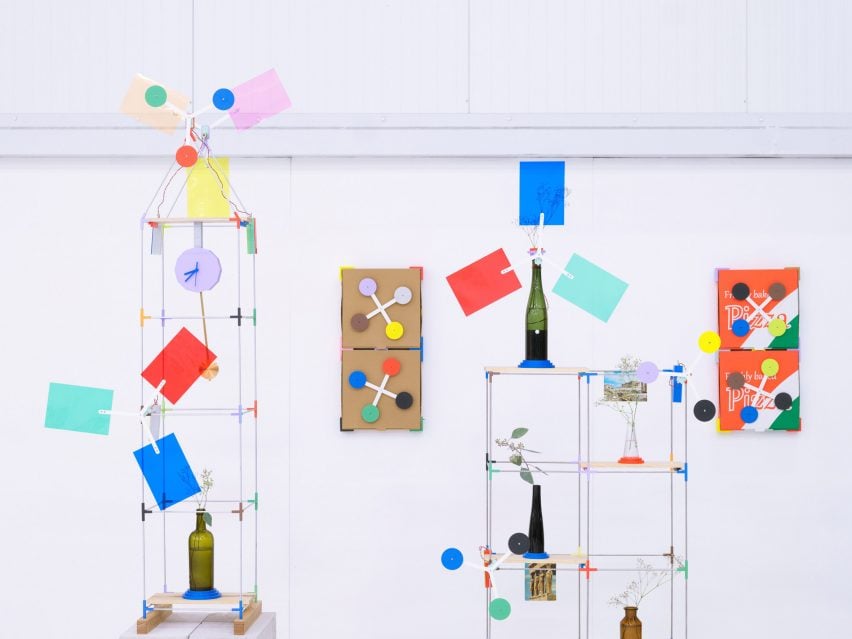
Lost and Found by Brown Office
Scottish design studio Brown Office used colourful 3D-printed elements to transform discarded materials, such as pizza boxes, postcards and glass bottles, into a travelling pop-up installation.
Colourful 3D-printed wheels, pole connectors and wall mounts were designed to be lightweight and easily transportable so they can be combined with found objects from the location where the installation is assembled.
“One of the challenges I set myself was to create a resource-light installation that could fit inside a suitcase,” said studio founder Dean Brown. “As much as it has a large physical appearance with it’s assembled, it disassembles to be super lightweight and small so you can create agile pop-up exhibitions.”
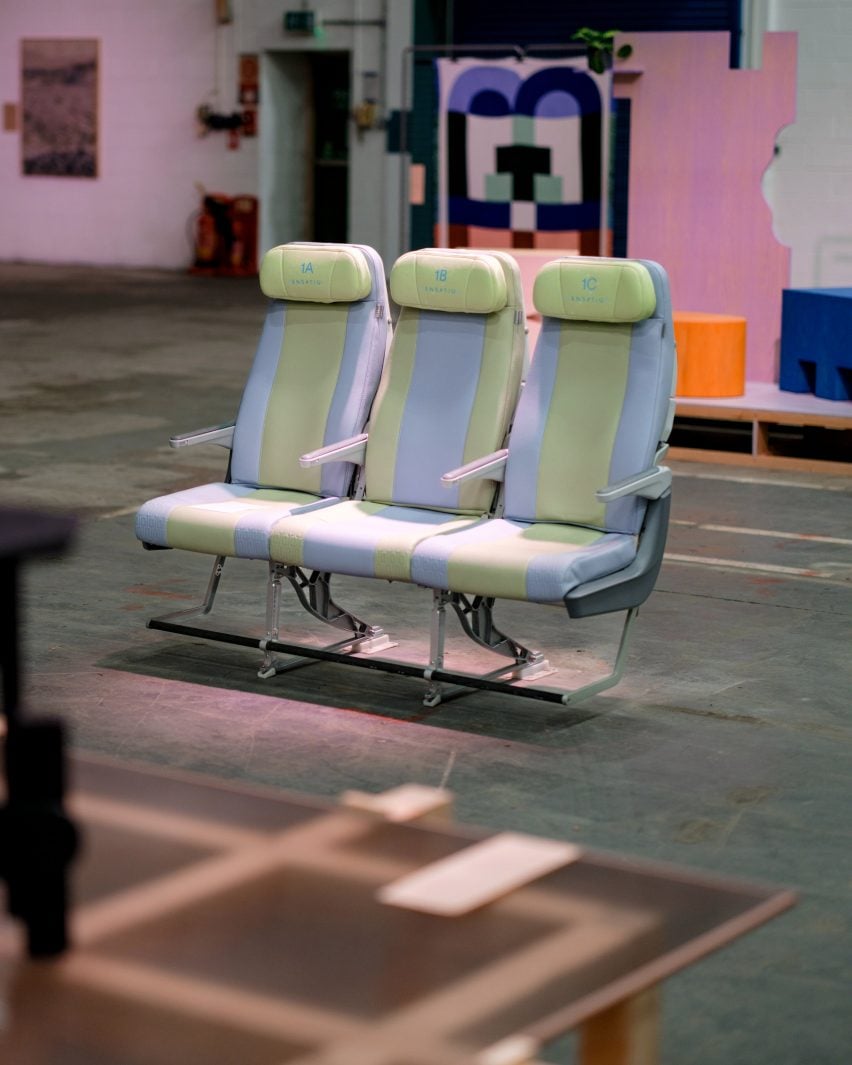
Sensation Concept Aircraft Seat Cover by Jamie O’Donnell for Muirhead Leather
Created for Scottish leather company Muirhead Leather, designer Jamie O’Donnell presented aeroplane seat covers in calming colours and textures surfaces, intended to make flying a less stressful experience for neurodivergent passengers.
The covers feature clearly labelled seat numbers on the head cushions and a geometric embossed pattern on the outer panels of the seat where the passenger’s hand would fall.
“Air travel is stressful for anyone, but especially for those who have heightened sensitivities like neurodivergent people,” said O’Donnell. “As Muirhead Leather’s lead aviation designer, I wanted the company to be less about trends and more about people-focused passenger experiences.”
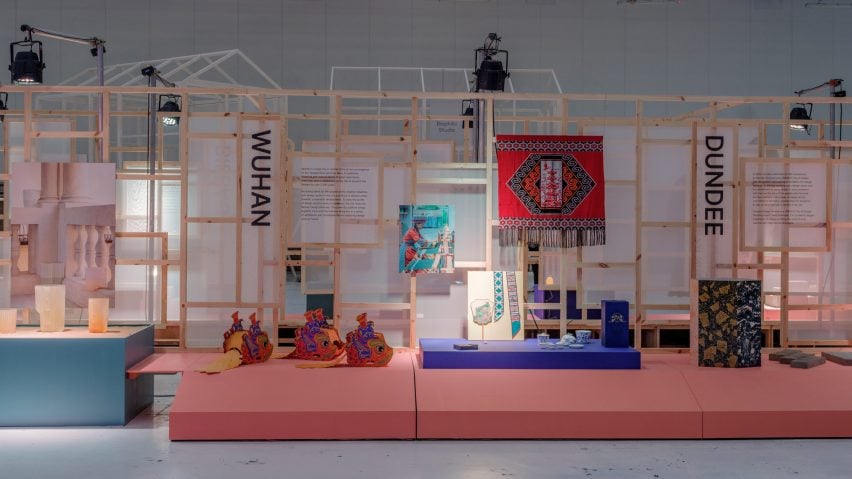
Hyper-Local
To mark the 10th anniversary of Dundee being named a UNESCO City of Design, the Hyper-Local exhibition brought together 50 designs that represent fellow cities holding the UNESCO title.
The exhibition was initiated by Dundee Design Festival creative director Stacey Hunter and co-curated with the UNESCO Creative Cities network, featuring designs from Bilbao in Spain, Detroit in the US, Graz in Austria, Kortrijk in Belgium, Nagoya in Japan, Querétaro in Mexico and Wuhan in China.
Among the objects were Chinese New Year dragon sculptures, overalls by Detroit workwear company Carhartt, Japanese bento boxes and screenprints informed by Mexican traditions.
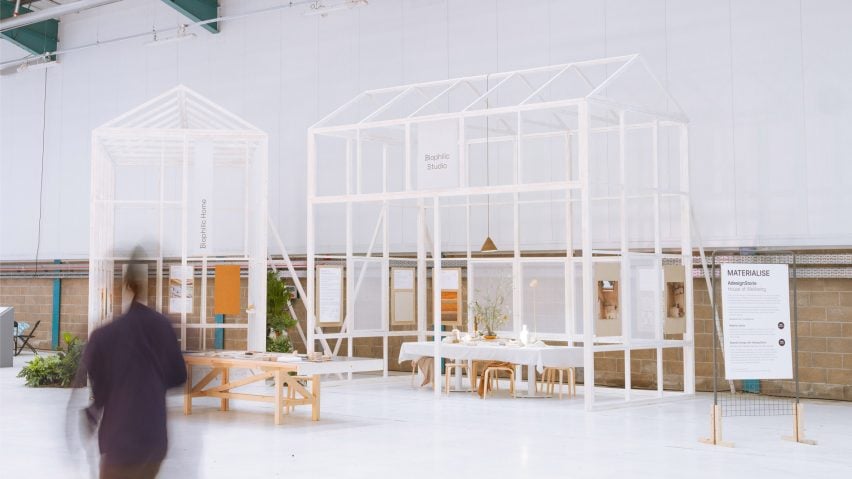
House of Wellbeing by AdesignStorie
Interior design studio AdesignStorie created an eco-home installation with two timber-framed structures and a Future Materials Table displaying 51 biomaterial samples, aiming to encourage visitors to think about how homes impact their wellbeing and the environment.
One of the structures contained the floor plan of a tiny home with information on sustainable construction materials, while the other hosted workshops on sustainable design.
“There’s less material required to build tiny homes and less energy required to heat them, so they’re inherently low impact,” said studio founder Alicia Storie. “They are also often located close to nature, which has benefits on wellbeing.”
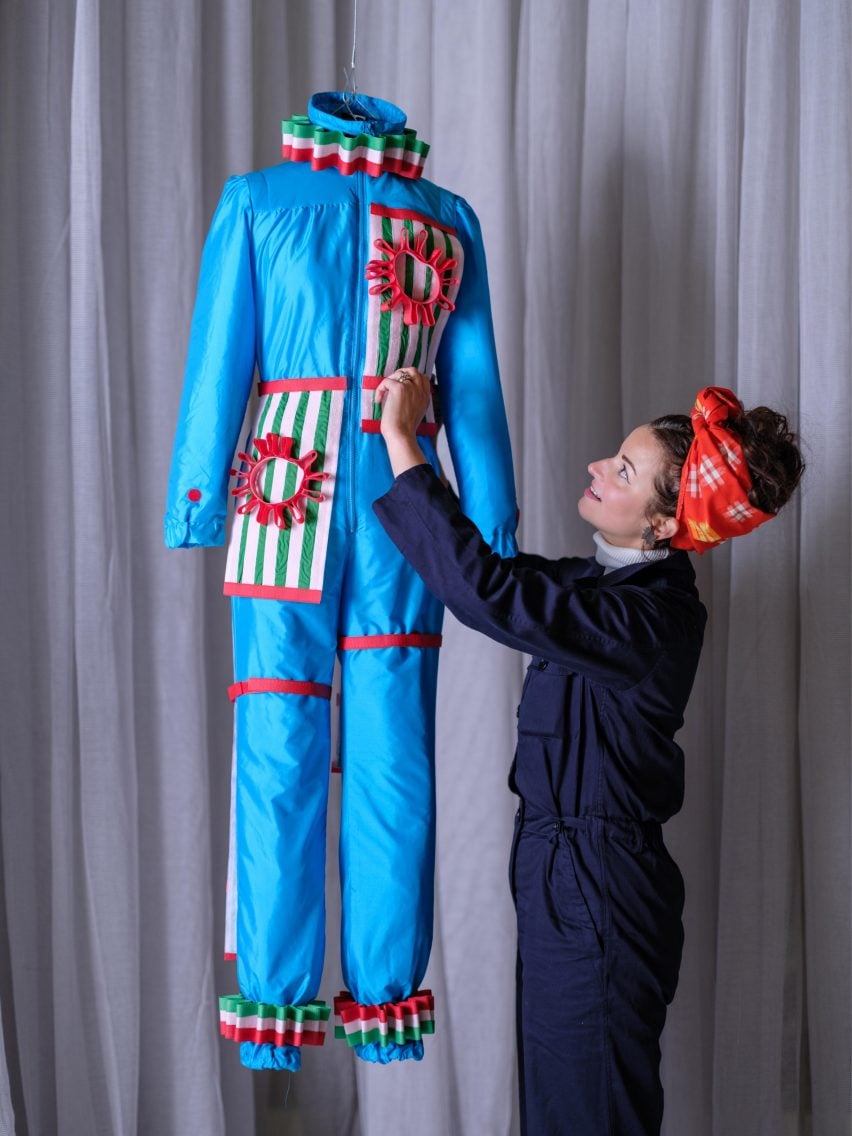
Challenging Uniformity by Gabriella Marcella
Glasgow-based designer Gabriella Marcella created a series of five eye-catching outfits with customisable details informed by how they could be used in different careers and settings.
Designed with people working in alpine environments in mind, the Alpina uniform (pictured above) featured flag-like panels that can be moved and altered to communicate signals to others on the slopes. Other designs included uniforms for painters and decorators and a Dazzlesuit, designed to disguise the wearer’s identity, that would suit celebrities.
“I allowed myself to get lost in the fantasy of what these could be when you wear them, without any boundaries as to what normal life or a normal uniform would allow it to be,” said Marcella. “They defy logic and reality.”
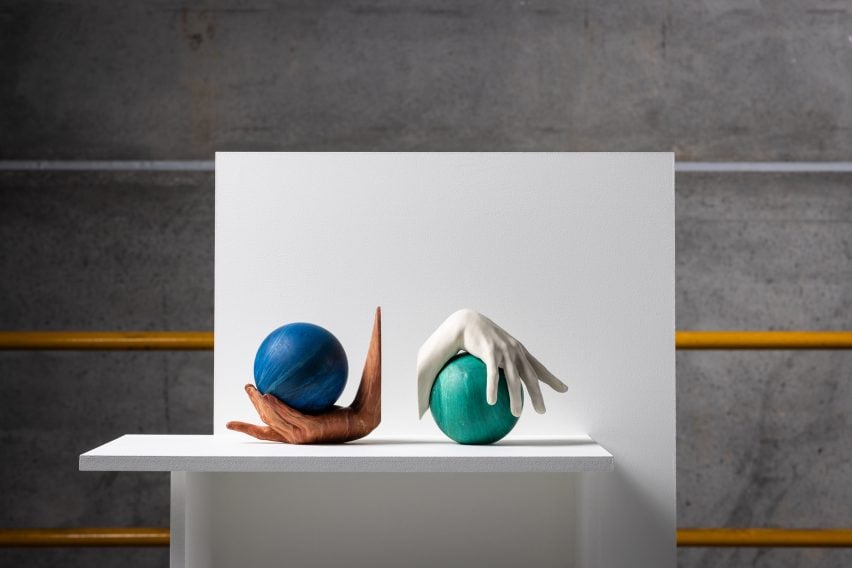
Bookends
The story of Dundee journalists Marie Imandt and Bessie Maxwell, who embarked on a round-the-world tour of 10 countries in 1894, informed the brief for the Bookends exhibition.
The exhibition featured 20 pairs of bookends designed by Scottish designers, each responding to Imandt and Maxwell’s voyage and the journalism they produced.
Among the designs were a pair of hands cast from current female Scottish journalists by Jennifer Gray, slabs of native Scottish material designed by Adam Johnston to resemble stacks of books and models of two explorers made from recycled newspaper by Lauren Morsley.
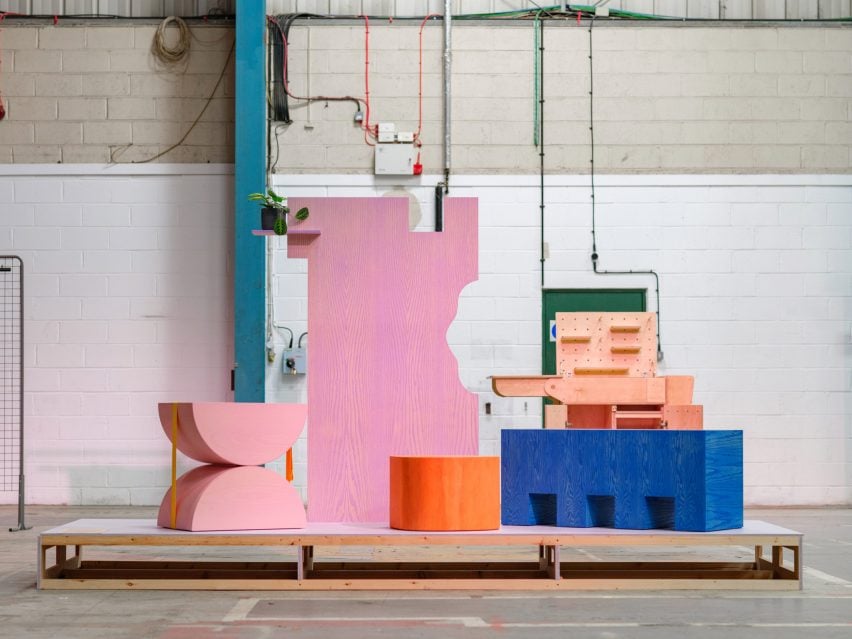
Spree by Martin Campbell and Emer Tumilty
Furniture design studio Martin Campbell collaborated with Glasgow-based artist Emer Timilty to create Spree, a collection of colourful wooden furniture with bulky, geometric forms.
Made as an initial concept that the design pair intends to develop further, the furniture was stained with bold colours that let the natural grain of the wood come through.
“You often have furniture presented very finished and at their endpoint, but we hope these are more accessible and we get ideas from other people,” said Campbell. “These pieces could be tables or seats if you reduce the size, or they may have storage in them – we’re leaving it an open conversation.”
The photography is by Grant Anderson.
Dundee Design Festival took place at Michelin Scotland Innovation Parc, Dundee, from 23 to 29 September 2024. See Dezeen Events Guide for an up-to-date list of architecture and design events taking place around the world.

